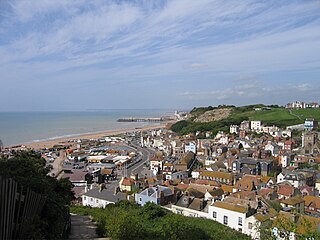
Hastings is a seaside town and borough in East Sussex on the south coast of England, 24 mi (39 km) east of Lewes and 53 mi (85 km) south east of London. The town gives its name to the Battle of Hastings, which took place 8 mi (13 km) to the north-west at Senlac Hill in 1066. It later became one of the medieval Cinque Ports. In the 19th century, it was a popular seaside resort, as the railway allowed tourists and visitors to reach the town. Today, Hastings is a popular seaside resort and is still a fishing port with the UK's largest beach-based fishing fleet. Its estimated population was 91,100 in 2021.

The Victoria and Albert Museum in London is the world's largest museum of applied arts, decorative arts and design, housing a permanent collection of over 2.8 million objects. It was founded in 1852 and named after Queen Victoria and Prince Albert.
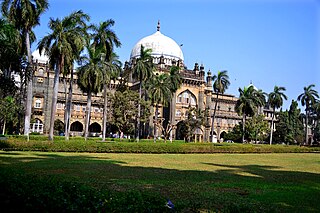
Chhatrapati Shivaji Maharaj Vastu Sangrahalaya, (CSMVS) formerly named the Prince of Wales Museum of Western India, is a museum in Mumbai (Bombay) which documents the history of India from prehistoric to modern times.

The Salar Jung Museum is an art museum located at Dar-ul-Shifa, on the southern bank of the Musi River in the city of Hyderabad, Telangana, India. It is one of the notable National Museums of India. Originally a private art collection of the Salar Jung family, it was endowed to the nation after the death of Salar Jung III. It was inaugurated on 16 December 1951.

The Burrell Collection is a museum in Glasgow, Scotland, managed by Glasgow Museums. It houses the art collection of Sir William Burrell and Constance, Lady Burrell. The museum opened in 1983 and reopened on 29 March 2022 following a major refurbishment. It was announced as the winner of the Art Fund Museum of the Year in July 2023. It is the only non-national museum to be the outright winner twice.

Reading Museum is a museum of the history of the town of Reading, in the English county of Berkshire, and the surrounding area. It is accommodated within Reading Town Hall, and contains galleries describing the history of Reading and its related industries, a gallery of artefacts discovered during the excavations of Calleva Atrebatum, a copy of the Bayeux Tapestry, finds relating to Reading Abbey and an art collection.

The National Museum in New Delhi, also known as the National Museum of India, is one of the largest museums in India. Established in 1949, it holds a variety of articles ranging from the pre-historic era to modern works of art. It functions under the Ministry of Culture, Government of India. The museum is situated on Janpath. The blueprint of the National Museum had been prepared by the Gwyer Committee set up by the Government of India in 1946. The museum has around 200,000 works of art, mostly Indian, but some of foreign origin, covering over 5,000 years.

The Colonial and Indian Exhibition of 1886 was held in South Kensington in London with the objective to "stimulate commerce and strengthen the bonds of union now existing in every portion of her Majesty's Empire". The exhibition was opened by Queen Victoria, and when it closed had received 5.5 million visitors.

The Stewartry Museum is a local museum in Kirkcudbright, Scotland, which covers the history of this part of Galloway.

Bushey Museum is in Bushey, Hertfordshire. It was officially opened as a volunteer-run museum in October 1993, having achieved Full Registration with the Museums and Galleries Commission. In the week prior to opening, the Museum won joint first prize in the prestigious Gulbenkian Foundation Awards for the best achievement by museums operating with limited resources. The building, on Rudolph Road in Bushey, had been built in 1909 as the offices of Bushey Urban District Council, and had passed to Hertsmere Borough Council on local government reorganisation in 1974.
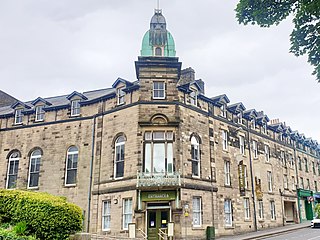
Buxton Museum and Art Gallery focuses its collection on history, geology and archaeology primarily from the Peak District and Derbyshire.
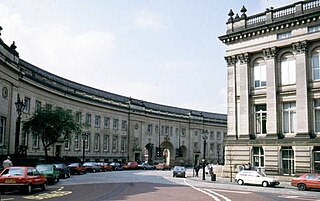
Bolton Art Gallery, Library & Museum is a public museum, art gallery, library and aquarium in the town of Bolton, England, owned by Bolton Metropolitan Borough Council. The museum, Bolton Museum, is housed within the grade II listed Le Mans Crescent near Bolton Town Hall and shares its main entrance with the library, Bolton Central Library, in a purpose-built civic centre.

Government Museum and Art Gallery, Chandigarh, is a public museum of North India having collections of Gandharan sculptures, sculptures from ancient and medieval India, Pahari and Rajasthani miniature paintings. It owes its existence to the partition of India. Prior to the partition, much of the collections of art objects, paintings and sculptures present here were housed in the Central Museum, Lahore, the then capital of Punjab. The museum has one of the largest collection of Gandharan artefacts in the world.

Montrose Museum opened in 1842 in Montrose, Angus, Scotland. The museum came into being when in 1841 the Montrose Natural History and Antiquarian Society started a fund to expand its space; in order to house its curiosities and wonders ranging from geological and ethnographical artefacts to a collection of natural history objects and fine art. It was accredited by the Museums, Libraries and Archives Council in June 2009.
Birmingham Museums Trust is the largest independent charitable trust of museums in the United Kingdom. It runs nine museum sites across the city of Birmingham, including Birmingham Museum and Art Gallery (BMAG) and Thinktank, Birmingham Science Museum, with a total of more than 1.1 million visits per year.
Staffordshire County Museum is housed in the Servants' Quarters of Shugborough Hall, Milford, near Stafford, Staffordshire, England. The museum features a restored Victorian kitchen, laundry and brewhouse as well as permanent galleries and temporary exhibitions.

Craven Museum & Gallery is a museum located in the town of Skipton, North Yorkshire, England, in Skipton Town Hall. The museum holds a collection of local artefacts that depict life in Craven from the prehistoric times to the modern day. On 21 June 2021, the museum reopened after a National Lottery Heritage Funded redevelopment project.
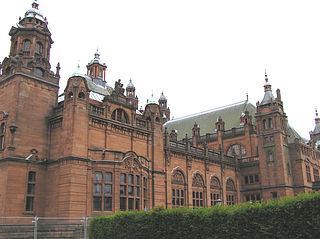
Glasgow Museums is the group of museums and galleries owned by the City of Glasgow, Scotland. They hold about 1.6 million objects including over 60,000 art works, over 200,000 items in the human history collections, over 21,000 items relating to transport and technology, and over 585,000 natural history specimens. They are managed by Glasgow Life, an 'arms length' external organisation contracted by Glasgow City Council to provide cultural, sporting and learning activities in the city.

The Usher Gallery is an art museum in Lincoln, England. The gallery displays a collection of artworks by painters such as J. M. W. Turner and L. S. Lowry. Established in 1927, it is run as part of Lincoln Museum.
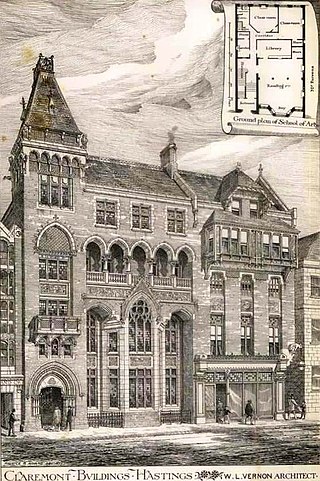
The Brassey Institute at 13 Claremont in Hastings, England, was founded by Thomas Brassey in 1879 and, as the Brassey School of Science and Art, provided for the study of arts and the sciences. It opened a chemistry laboratory in the Old Town of Hastings around 1900. The building has housed the town's library for decades. Stocking 11,000 volumes as of 1933, the Institute also housed a museum devoted to natural history, archaeology and local art.


























